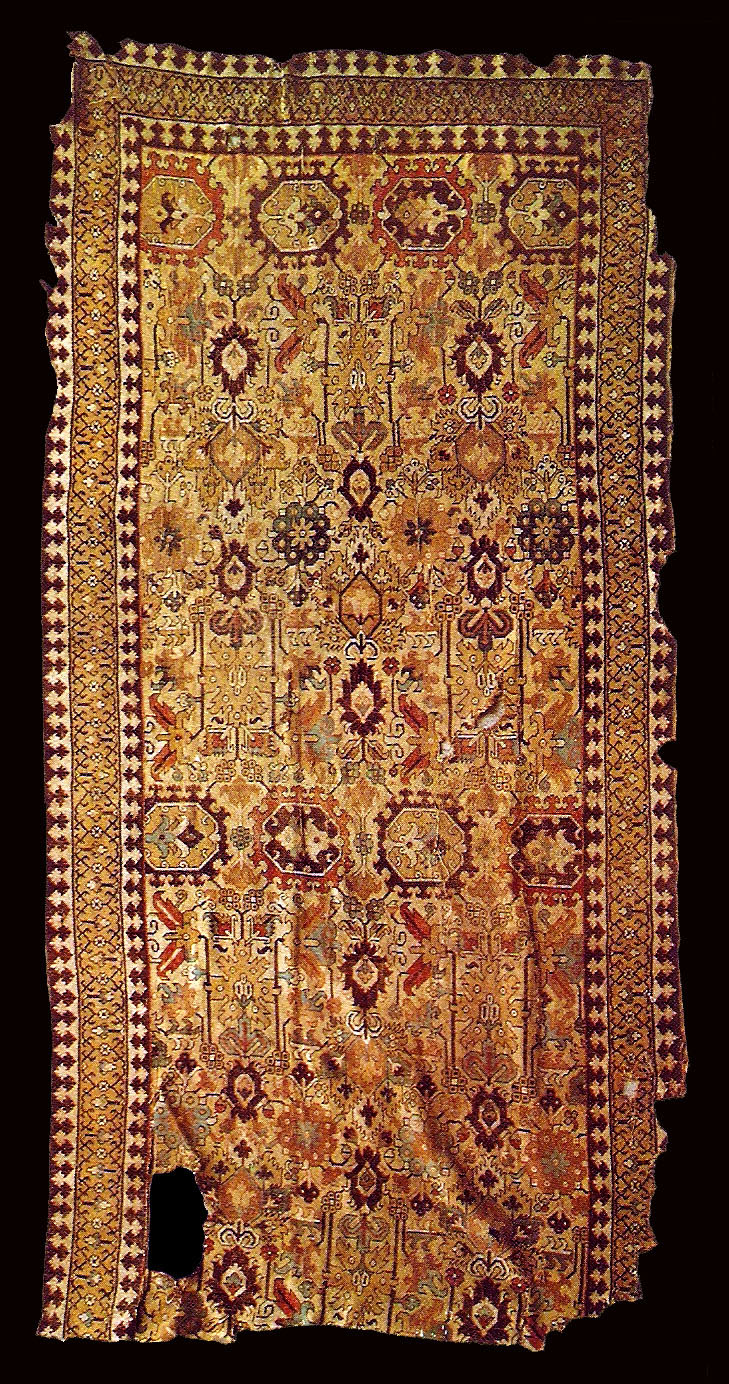|
Türk ve Islam Eserleri Museum, Istanbul.
Acquired 9 April 1915. Inv. no. 41
(3078) from the library of Köse Ömer at Erzurum
185 x 365 cm
Light Yellow ground.
Red (dark yellow) and brown octagons are joined by brown stems to dark
yellow palmettes. The octagons contain small palmettes with blue, yellow and
red elements, outlined in brown The small palmettes flank a rosette. Small
brown and large dark yellow serrated palmettes alternating on the central
axis contain small white, brown and blue flowers. Other motifs include large
dark yellow reversed palmettes with white dots and with two segmented blue
leaves joined to small blue-petalled palmettes, linked by stems and rosettes
of various colors. Alternating large yellow and dark blue rosettes contain
smaller rosettes of the opposite colour and full the space between groups of
palmettes. Stems circling the two octagons in the side axes join in the
centre via a dark yellow palmette. The pattern is repeate, somtimes in
recerse, over the length of the field.
Borders: Yellow ground. Small white rosettes and small palmettes, outlined
in brown, linked by a fine brown curving stem. Minor borders - 6 cm wide.
Reciprocal trefoil design in brown and white, outlined in red. Guard stripe
- brown stripe between main and minor borders.
Warp: Z2S wool, brown and ivory
Weft: wool, brown and white, two shoots
Knots: symmetrical, 34 H X 38 V = 1292 per square dm
Pile: wool, coarse, loosely twisted and slanting to the left, cut short
Colours: red, blue, yellow, brown and ivory
condition: one end is missing and there are large holes and tears in the
field - worn.
Yetkin, Serare, Early Caucasian Carpets in Turkey, Vol. I, London, 1978, pl.
62.
 |

